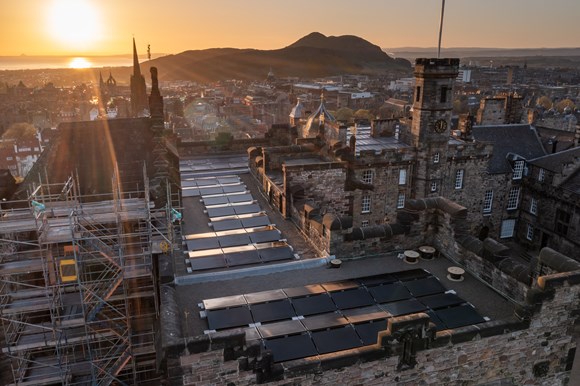Edinburgh Castle has received a slight makeover as the building’s freshly installed solar panels were unveiled on Thursday.
Occupying the roof of the Scottish National War Memorial, the works have been funded by Scottish Enterprise.
It comes as part of Historic Environment Scotland’s (HES) continued programme to reduce energy output across the various storied sites within its care.
City sightseers should not be able to tell the difference however, with the Castle’s elevated position high on the rock concealing the panels perfectly.

Various stakeholders were consulted in the hope of respecting the great cultural weight and the historic aura of one of the capital’s most iconic landmarks.
David Mitchell, Director of Conservation at HES, said: “It was crucial that the design plans took into careful consideration the historic, cultural and emotional significance of the War Memorial, involving close collaboration with the trustees.”
The 26,500kWh of renewable energy generated per year by the panels is said to be enough to offset the output of the entire War Memorial building.
Prior to the pandemic, the Castle was already making eco-friendly strides, racking up a 29% reduction in energy consumption and a 46% decrease in carbon emissions.
HES is aiming to follow the targets set out by the Scottish Government by reaching net zero by 2045, as outlined in the group’s Climate Action Plan.
Energy remains a hotly discussed issue across different sectors in light of the cost-of-living crisis and Russia’s invasion of Ukraine.
First Minister Nicola Sturgeon will once again address the All Energy green power conference, set to take place in Glasgow in less than two weeks.
Convinced that heritage can play a key role in Scotland’s green recovery, HES are stepping up their efforts to reduce consumption.
Mitchell continued: “As a major player under the 2009 Climate Change Act, we have a responsibility to lead by example in reducing our carbon emissions, and in developing innovative approaches to promote sustainability.
“By pioneering schemes such as this, we can demonstrate that historic buildings are part of the solution to reducing emissions and helping Scotland reach net-zero.”
